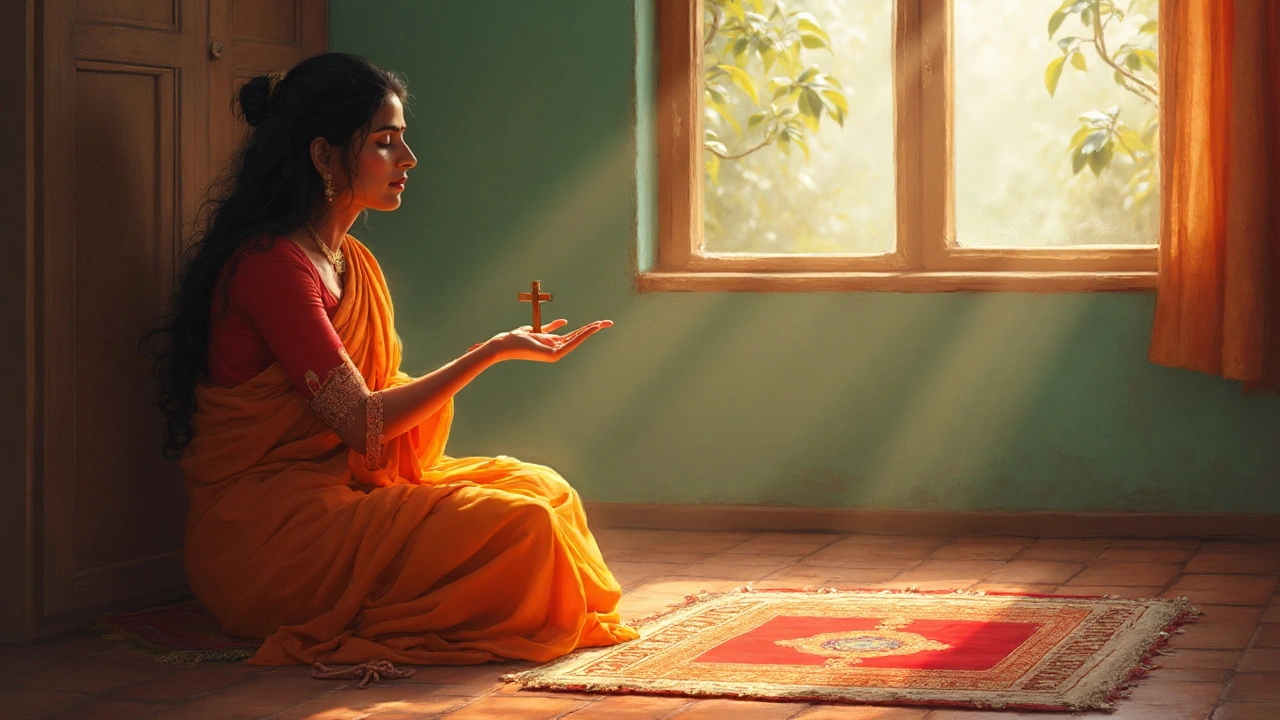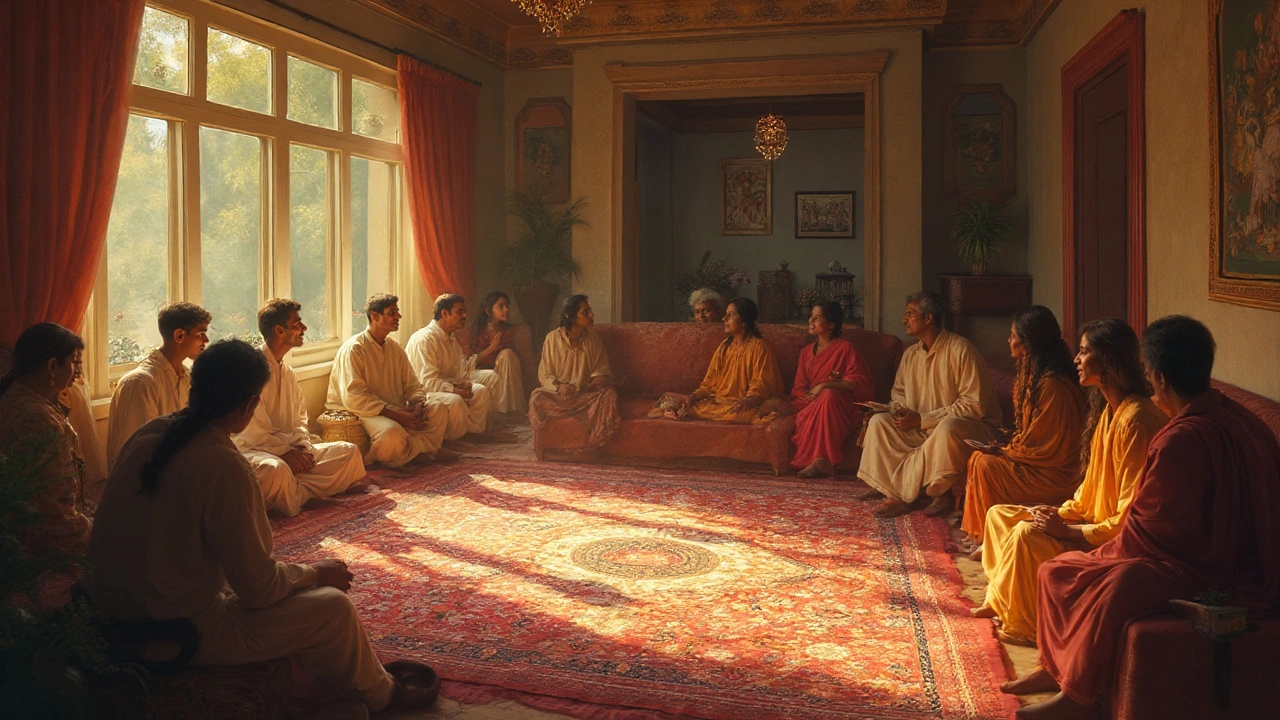Can Christians Use Prayer Rugs? Faith, Symbolism, and Modern Practices Explained

Picture this: you’re browsing through a home décor shop or scrolling online late at night, and you stumble upon a beautiful, intricate prayer rug. Maybe you’re drawn in by the bold patterns or you’re reminded of your travels. You start thinking—wait, aren’t these usually for Muslims? Could a Christian use a prayer rug? Or would that be somehow disrespectful? It’s not the kind of thing discussed at Sunday school, so the question lingers, catching many people off guard. Some folks freeze up, thinking it’s a faith faux pas; others wonder if it could bring something meaningful to their own prayer life. Let’s lift the lid on the real story behind Christians and prayer rugs—because under the surface, there’s more to it than meets the eye.
Where Prayer Rugs Came From and What They Mean
To grasp why this is such a big question, you have to know a little bit about the roots and the symbolism behind prayer rugs. The earliest known prayer mats go way back, with woven examples found in Central Asia and Turkey from the 15th century. In Islamic tradition, a prayer rug—called a "sajjadah"—isn’t just about comfort on cold floors. It’s a marked, clean space, set apart for those five daily prayers (salat). The classic features? A niche motif at one end (called a mihrab), which points the worshipper toward Mecca, and sometimes, images of mosques, minarets, or stylized patterns full of religious meaning. Some modern rugs swap out these icons altogether, favoring geometric patterns for wider appeal.
But even before Islam made prayer rugs iconic, various cultures used special mats or cloths for spiritual practices. Early Christians, Jewish traditions, even certain ancient pagans all had objects or spaces marked as set apart. It’s proof our human instinct to "set the scene" for sacred moments isn’t brand new. Throw in a few patristic references (Clement of Alexandria, for instance, wrote about keeping one’s personal prayer place sacred), and you can see the cross-faith heritage. It’s not the rug itself that’s holy, but what it represents—focus, reverence, and a break from the daily grind for something bigger.
Fast-forward to today. The actual number of Muslims using prayer rugs worldwide? An estimated 1.8 billion Muslims, with Pew Research stats showing the majority engage in daily prayers, often with a rug. Meanwhile, a 2022 Lifeway Research study found that 56% of Christians in America use some set routine or item during personal prayer—like a chair, a kneeler, or yes, even a mat. It’s not exclusive to anyone. What matters most is intention, not the thread count or pattern on your rug.
Can Christians Actually Use Prayer Rugs?
A lot of Christians get nervous about anything that feels "borrowed" from another religion, worried they’ll somehow get it wrong—or disrespect someone else’s beliefs. But here’s the surprise: there’s nothing in Christian scripture or mainstream doctrine that forbids the use of a prayer rug. The Bible doesn’t even mention prayer rugs specifically. What does it talk about? Attitude. Focus. The call to “pray without ceasing” (1 Thessalonians 5:17)—whether you’re kneeling, standing, sitting, or lying on your back. What matters is the heart, not the props.
Some liturgical traditions around the world use special kneeling cushions, altar cloths, or prayer shawls (like in Anglican, Orthodox, or Catholic churches). These aren’t so far off from the idea behind prayer rugs. At home, some Christians like to have a "prayer corner"—with a small stool, candles, maybe a cross, and, yes, sometimes a dedicated mat, especially in Catholic, Orthodox, or Coptic circles. For some, borrowing the idea of a prayer rug feels a little like Christians using yoga: controversial for a few, just another tool for others.
The question pops up more often these days, since global travel and the internet blur boundaries. Couples I know—like Fiona and I—have rug stories of our own. We picked up a handmade mat from Istanbul on our honeymoon, not because it was "a prayer rug" but because it reminded us of a holy moment shared on the road. We’ve used it as a centerpiece for family prayer nights or placed it under a basket of candles at Christmas. None of these practices offended our beliefs, and they never felt like cultural appropriation because we respected the origin and intention.
Of course, sensitivity is smart. If you’re using a rug with clear Islamic motifs (like a mihrab or Arabic script), it’s good manners to know its meaning and avoid anything that desecrates another faith’s symbol. Want a tip? Choose rugs with simple, abstract patterns or look for vintage mats whose context doesn’t shout any one tradition. And if a friend from another faith visits, just be open about your reasons. More often than not, respect and honesty avert awkward misunderstandings.

How Do Christians Use Prayer Rugs Day-to-Day?
If you polled a group of churchgoers about prayer rugs, you’d probably get everything from "never heard of it" to "I have three." Unlike in Islam, there’s no single prescribed use in Christianity. But here are some of the practical and creative ways Christians incorporate prayer rugs into daily rituals:
- Personal prayer space: Many Christians designate a corner, chair, or even a part of the room for daily devotionals, and a simple rug can make it feel set apart, special, and intentional.
- Group or family prayer gatherings: During small group meetings or family devotionals, laying a mat in the center of the room can act as a focal point. Kids especially find it easier to stay put and stay attentive with something tangible marking the "pray zone."
- Retreats and spiritual getaways: Several Christian retreat centers hand out cloth mats or encourage bringing one. Lying, sitting, or kneeling on a rug outdoors can transform a simple field or living room into a makeshift chapel.
- Church events: For some special services—especially those focused on prayer, meditation, or healing—churches lay down rugs to invite participants to physically move and kneel, echoing early Christian traditions.
- Artistic or worship expression: One Christian artist in California creates “prayer canvases,” which are like rugs but painted, designed for people to stand, kneel, or lie prostrate during worship sessions, blending visual art and faith.
- Interfaith dialogue: Some Christians use prayer rugs as bridges to conversations with Muslim neighbors, or host interfaith prayer sessions where everyone brings their own traditional prayer item, highlighting both differences and similarities.
That isn’t a revolution—it’s just practical creativity. It also makes prayer more accessible for people with mobility issues or those who prefer softer surfaces. My friend Caleb, who’s recovering from a sports injury, finds kneeling on a plush rug far more bearable than the hardwood floor of his living room. His attitude? "If it helps me focus on God, why not use it?" That pretty much nails the Christian outlook for most people: if it points you toward genuine prayer and respect, then you’re doing it right.
Symbols, Misconceptions, and Buying Guide—for Christians Who Care
Now onto the prickly part: symbols and misunderstandings. Walk into most Turkish or Moroccan rug shops and you’ll see all kinds of designs. Some prayer rugs are subtle—linear patterns, colors with heritage meaning. Others are loaded with holy references. Here’s where some people get tripped up. If you’re a Christian, are you unintentionally crossing a sacred line by picking up a rug with Arabic script or a mosque silhouette? Not likely, if the use is respectful, but it’s always smart to double-check what those motifs actually mean.
One quick hack: ask the salesperson before buying, or do a quick image search for "Islamic prayer rug motifs" before picking out a design. Avoid rugs that clearly feature the Kaaba, Mecca, or script from the Quran if you plan to use it for Christian worship—this just keeps things considerate. A plain border or geometric print is fair game. If you want to go niche, look into vintage Christian prayer rugs: Armenian, Greek, and Ethiopian traditions have woven textiles specifically for Christian use, and they’re as beautiful as their Eastern neighbors’ rugs.
Pricing varies a ton. Here’s a handy table for rough price ranges (2025 numbers, since rug inflation is a real thing):
| Type | Typical Size | Avg. Price (USD) | Main Origin |
|---|---|---|---|
| Handmade Wool Prayer Rug (Generic) | 60x120 cm | $60-$250 | Turkey, Iran |
| Machine-made Polypropylene Rug | 80x120 cm | $25-$80 | Turkey, China |
| Christian Coptic or Armenian Mat | 70x150 cm | $100-$350 | Egypt, Armenia |
| Custom Artistic Prayer Rug | Varies | $200-$700 | US, UK, Various |
Want a tip for care? Most home washing machines are too rough for dyed wool, so dab stains with gentle soap, and air-dry flat. For homes with pets or kids, machine-made polyester rugs (which often mimic the look of classic prayer mats) are easier to clean. Just don’t let prayer mats gather dust as "precious objects"—they’re meant for wear.
Still feel awkward about the idea? Here’s what helps: remember the backbone of all Christian worship isn’t about objects, but about intent and focus. As long as you’re not using a rug to mimic rituals from another faith (or claim their deeper symbolism as your own), a prayer mat can simply help make your prayer time more intentional and grounded. Most people, once they try it, find it less strange than imagined. It just feels a bit more reverent, a way to block out chaos, and create a mini sacred space—right there on the living room floor.